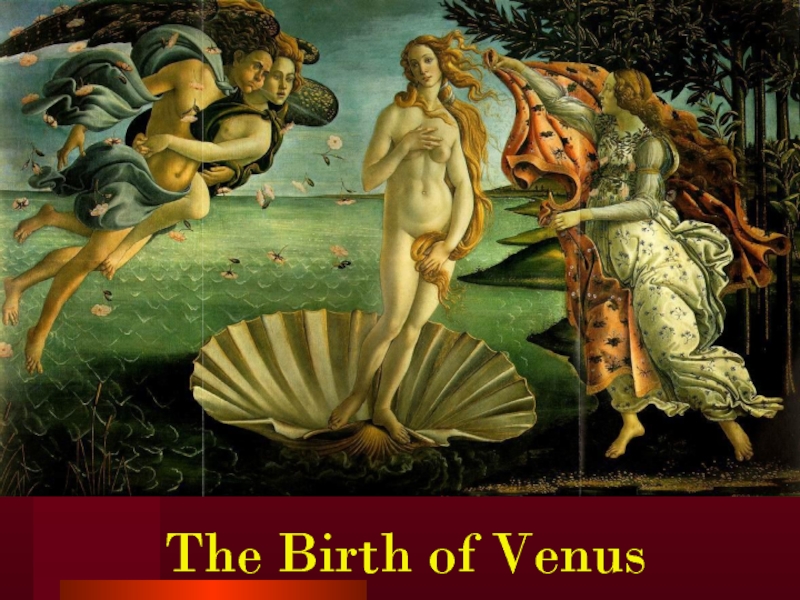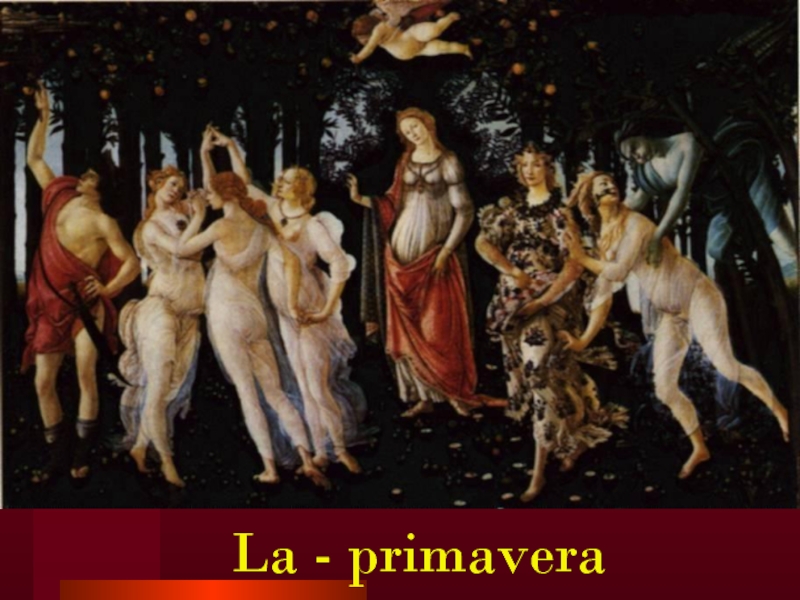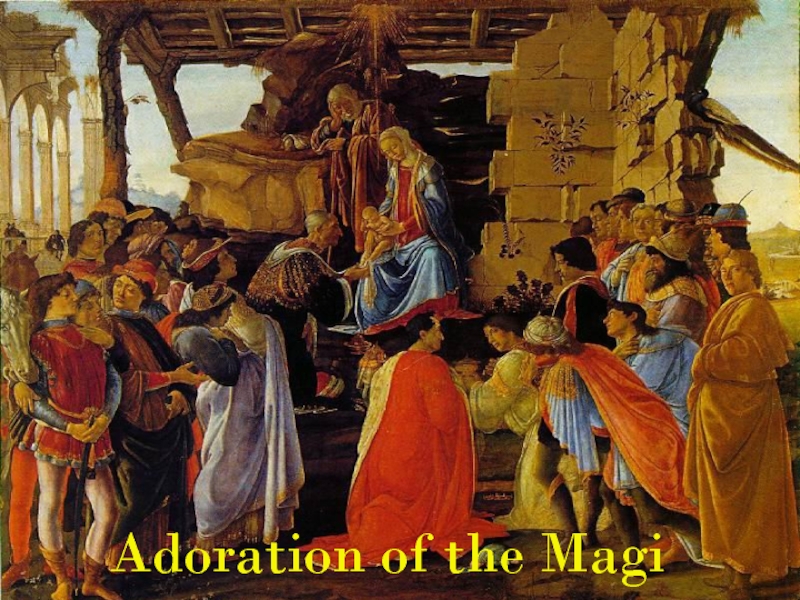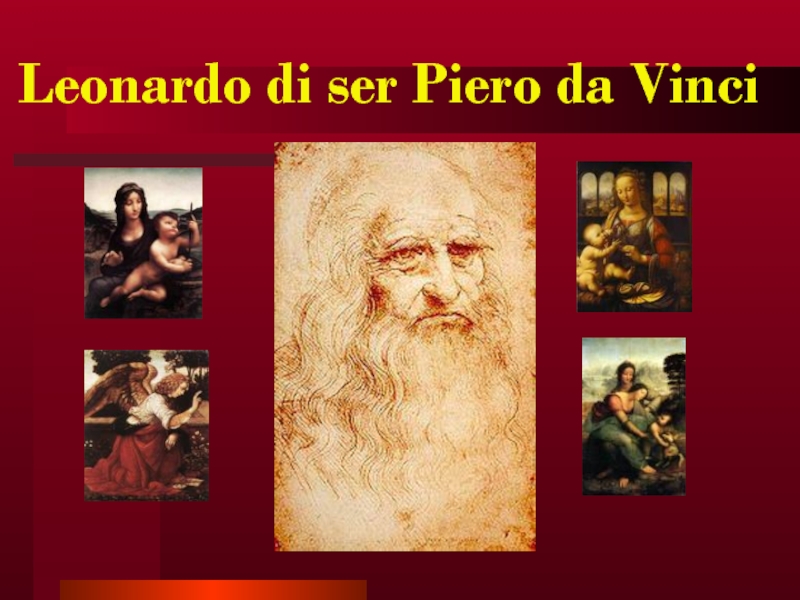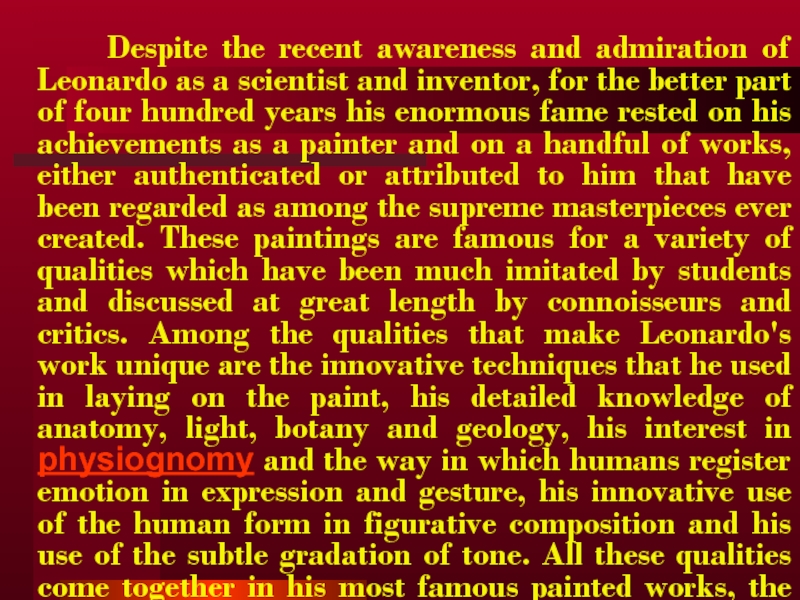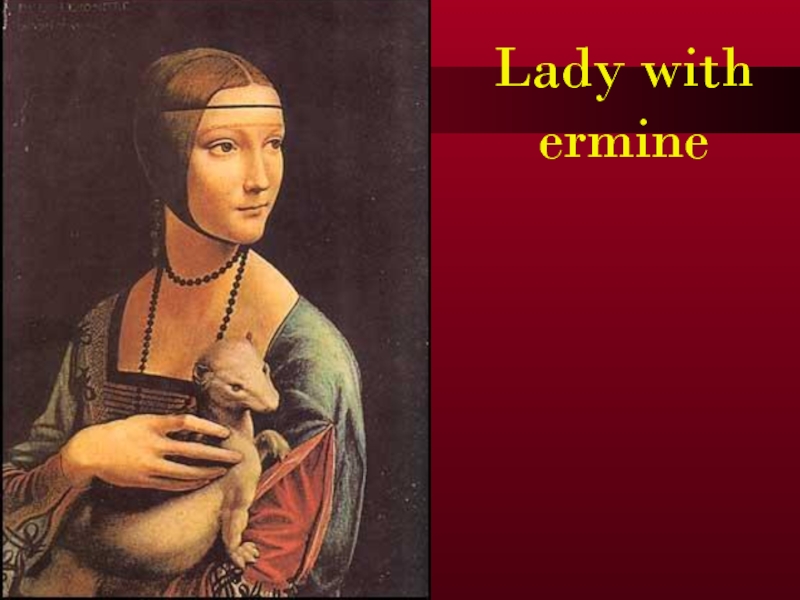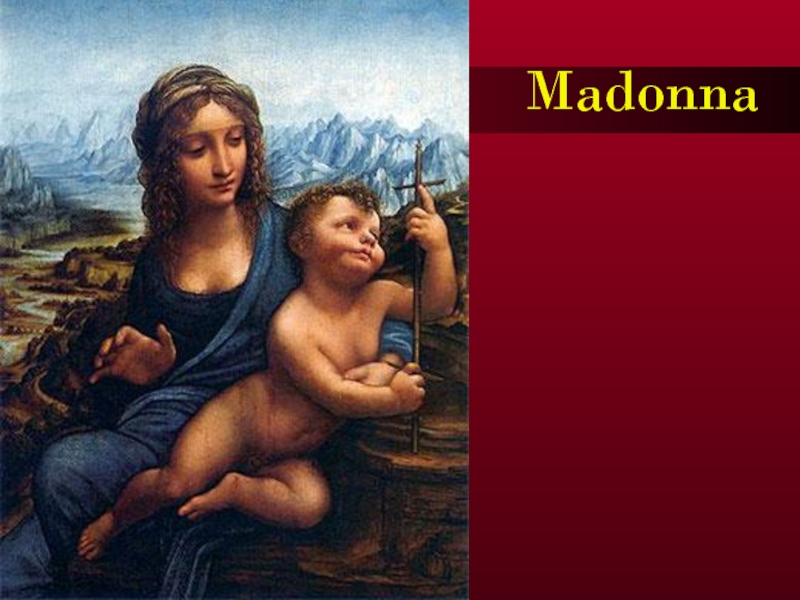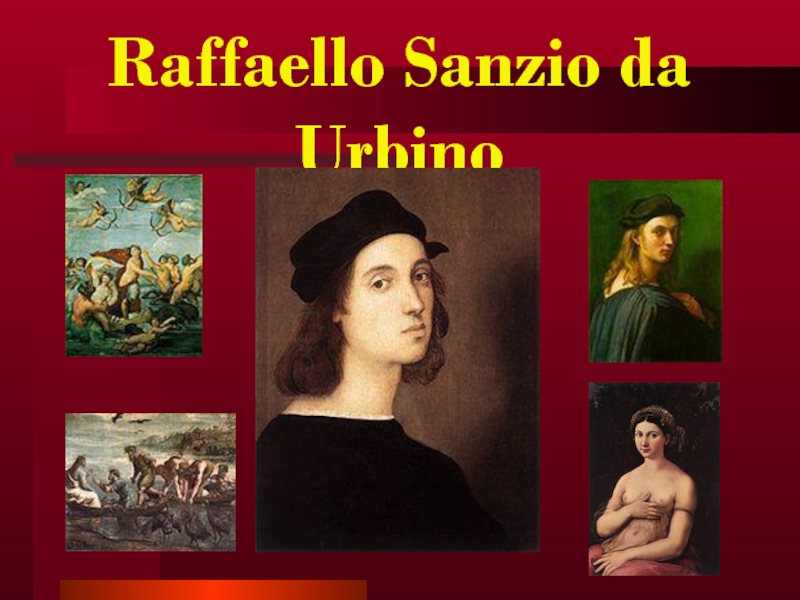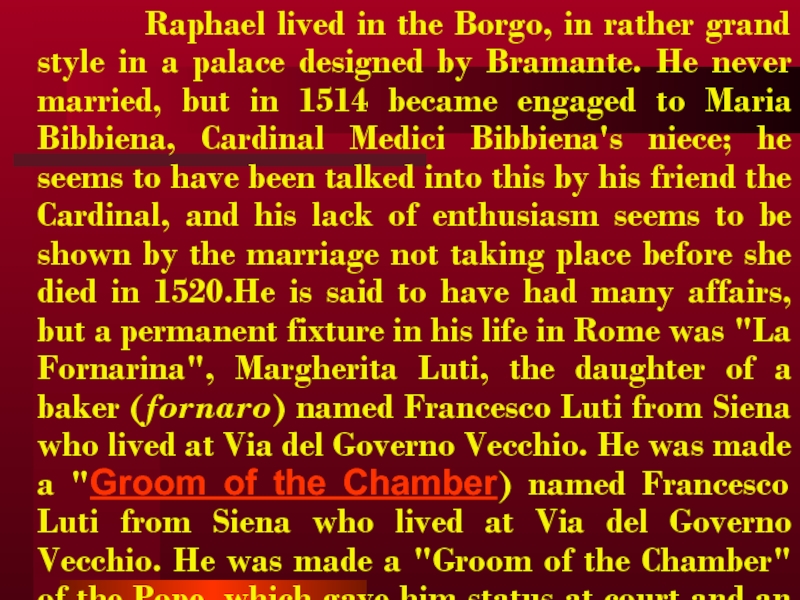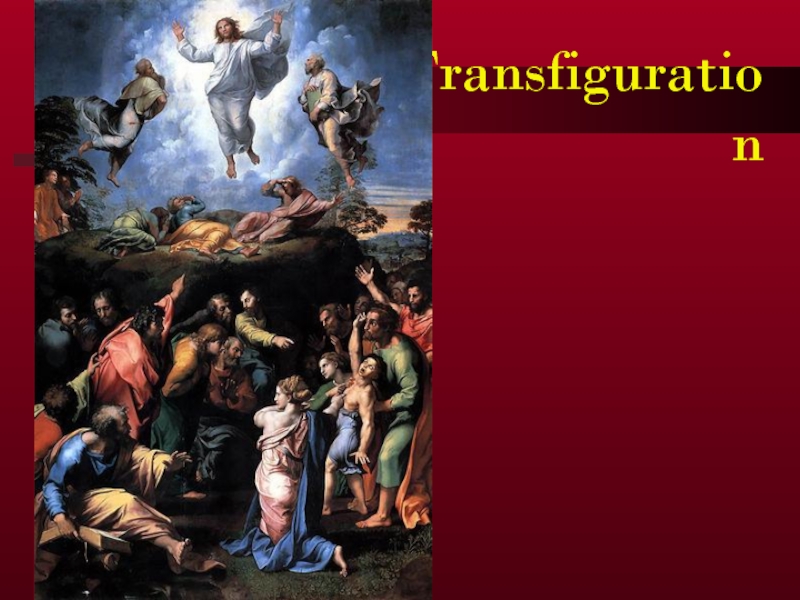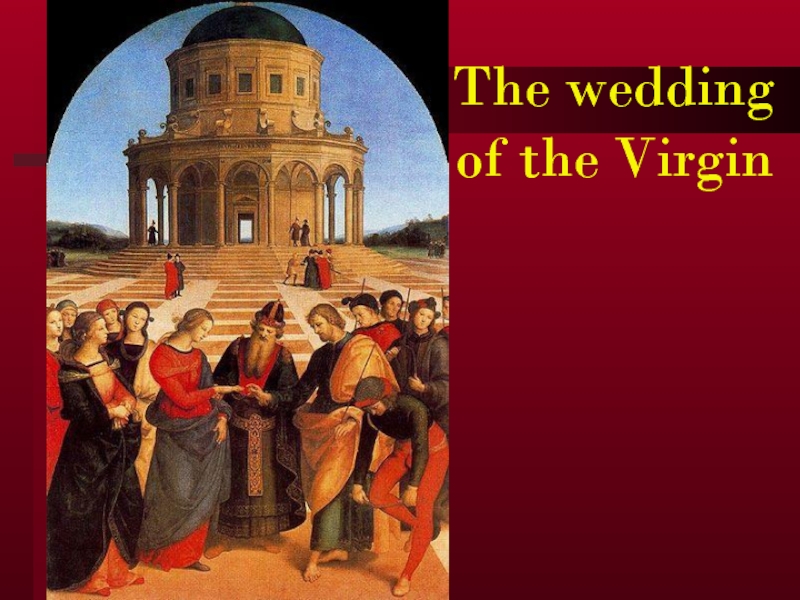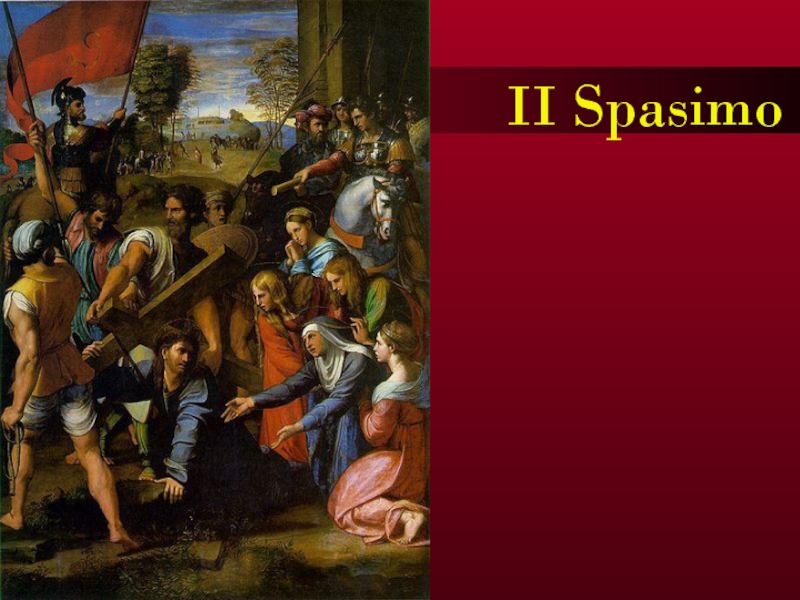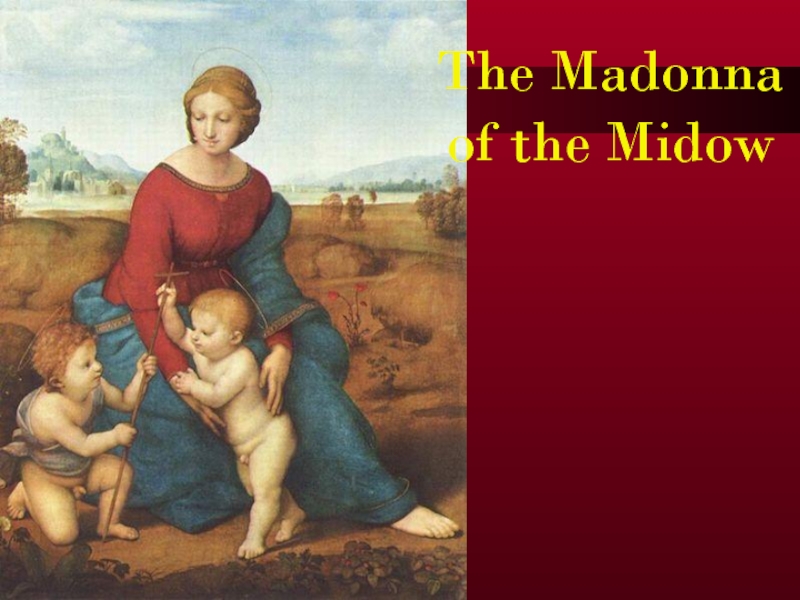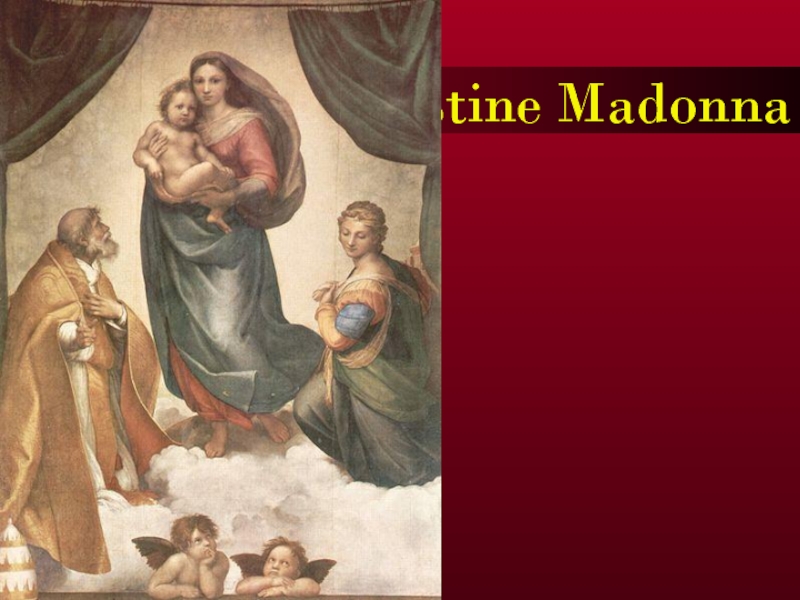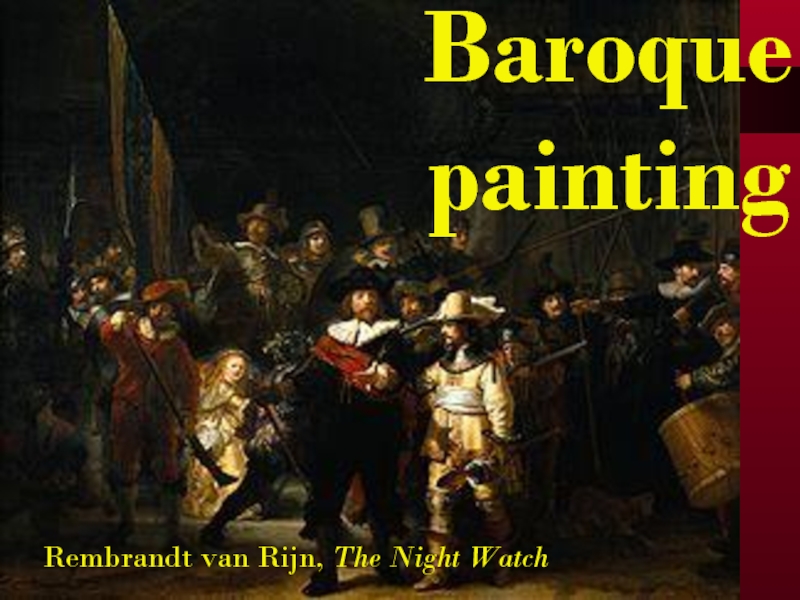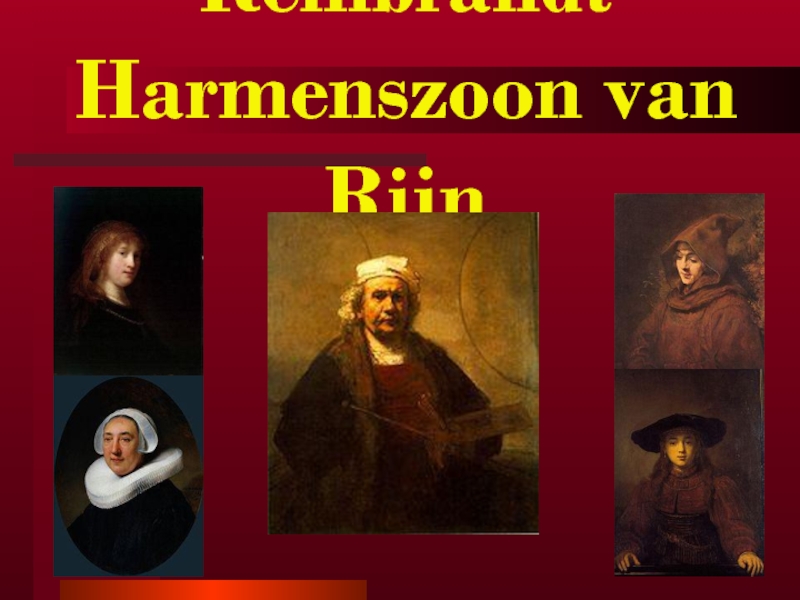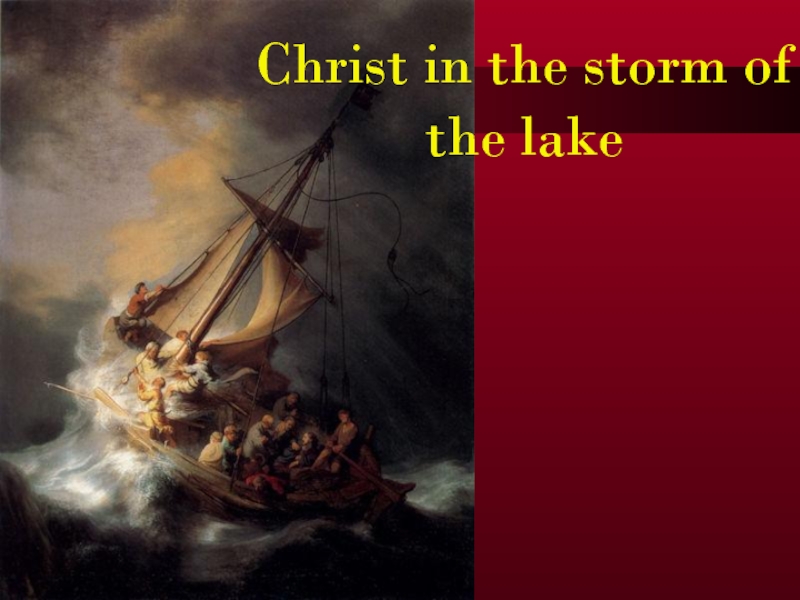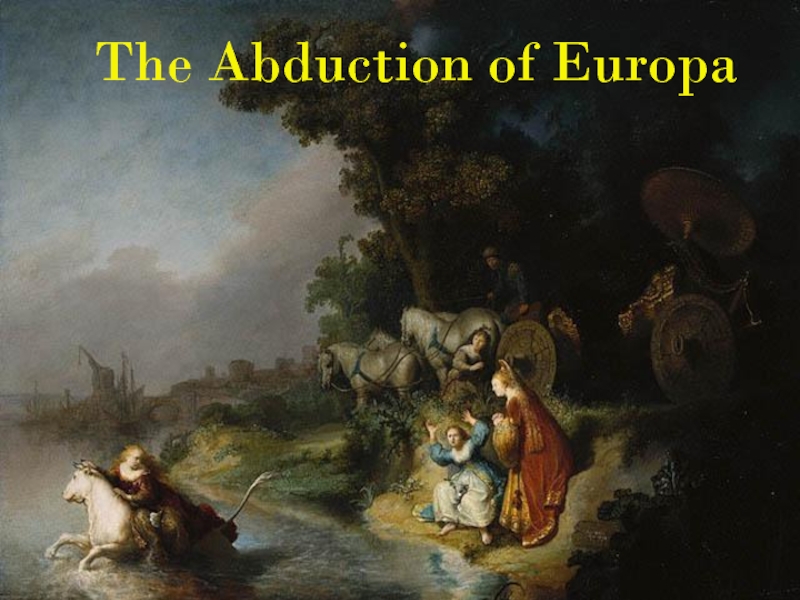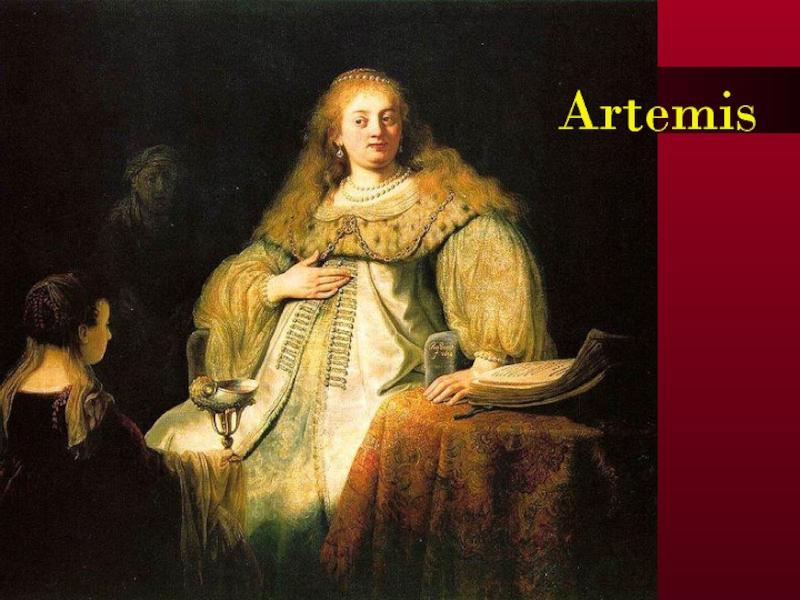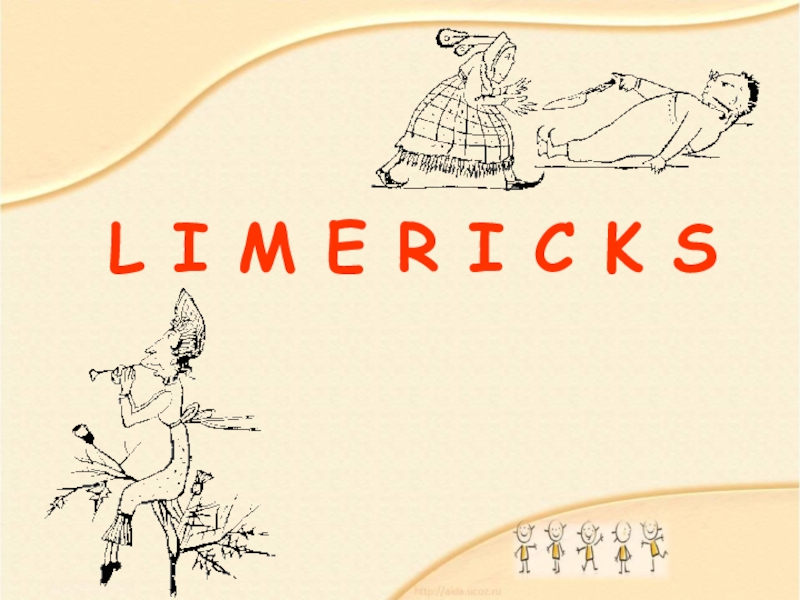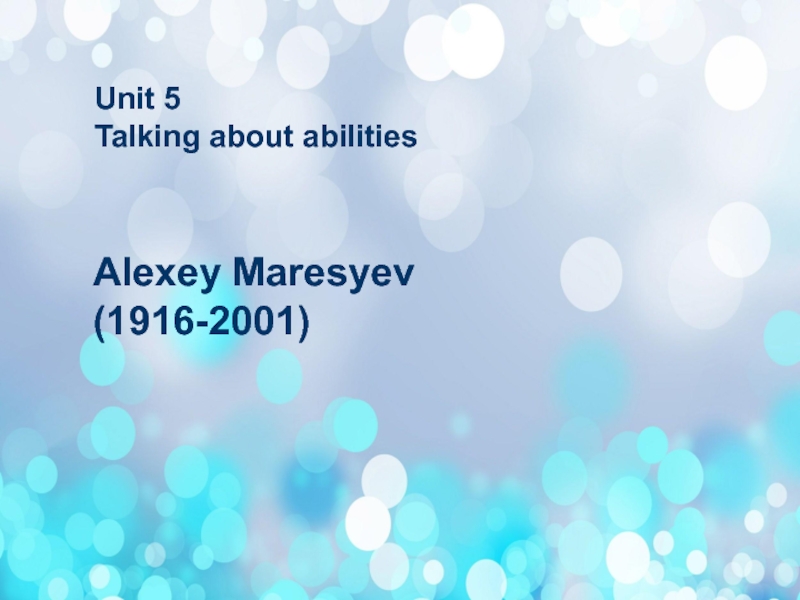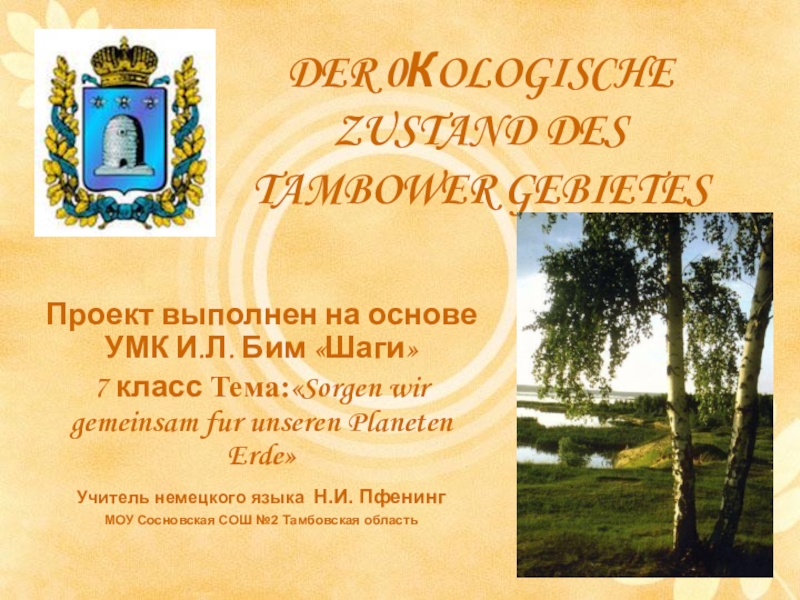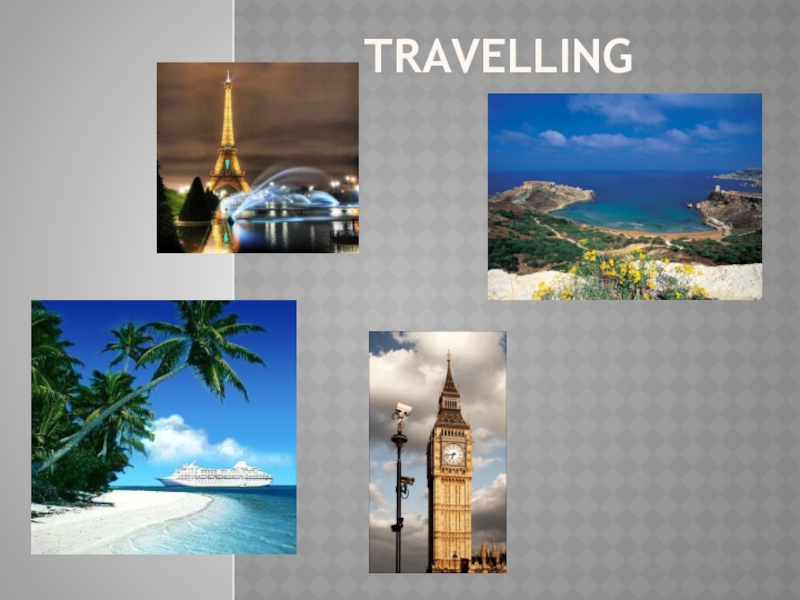11
- Главная
- Разное
- Образование
- Спорт
- Естествознание
- Природоведение
- Религиоведение
- Французский язык
- Черчение
- Английский язык
- Астрономия
- Алгебра
- Биология
- География
- Геометрия
- Детские презентации
- Информатика
- История
- Литература
- Математика
- Музыка
- МХК
- Немецкий язык
- ОБЖ
- Обществознание
- Окружающий мир
- Педагогика
- Русский язык
- Технология
- Физика
- Философия
- Химия
- Шаблоны, фоны, картинки для презентаций
- Экология
- Экономика
Презентация, доклад по английскому языку История искусства
Содержание
- 1. Презентация по английскому языку История искусства
- 2. Слайд 2
- 3. Early reniassance Giotto di Bondone
- 4. Giotto di Bondone
- 5. From 1306 to
- 6. The kiss of Judas
- 7. The flight into Egypt
- 8. Adoration of the Magi
- 9. High Renaissance
- 10. Sandro Botticelli
- 11. Original
- 12. The Birth of Venus
- 13. La - primavera
- 14. Adoration of the Magi
- 15. Leonardo di ser Piero da Vinci
- 16. He
- 17. Despite the
- 18. Mona Lisa
- 19. Lady with ermine
- 20. Madonna
- 21. Raffaello Sanzio da Urbino
- 22. Слайд 22
- 23. Raphael
- 24. Transfiguration
- 25. The wedding of the Virgin
- 26. II Spasimo
- 27. The Madonna of the Midow
- 28. Sistine Madonna
- 29. Baroque painting Rembrandt van Rijn, The Night Watch
- 30. Rembrandt Harmenszoon van Rijn
- 31. Rembrandt Harmenszoon
- 32. Christ in the storm of the lake
- 33. The Abduction of Europa
- 34. Artemis
Language is the confession of a nation. It is really so, because every nation by means
Слайд 2
Language is the confession of a nation. It is really so, because every nation by means of the language express the condition of a soul. But you needn’t use verbal activities to reflect ideas and feelings. Talented people can talk with the help of the painting language, that is more emotional and eloquent. I want to talk about famous painters of the Renaissance in my work .
Слайд 4 Giotto di Bondone (c. 1267 – January 8, 1337),
better known simply as Giotto, was an ItalianGiotto di Bondone (c. 1267 – January 8, 1337), better known simply as Giotto, was an Italian painterGiotto di Bondone (c. 1267 – January 8, 1337), better known simply as Giotto, was an Italian painter and architectGiotto di Bondone (c. 1267 – January 8, 1337), better known simply as Giotto, was an Italian painter and architect from FlorenceGiotto di Bondone (c. 1267 – January 8, 1337), better known simply as Giotto, was an Italian painter and architect from Florence in the late Middle AgesGiotto di Bondone (c. 1267 – January 8, 1337), better known simply as Giotto, was an Italian painter and architect from Florence in the late Middle Ages. He is generally considered the first in a line of great artists who contributed to the Italian Renaissance.. He was the son of a man named Bondone, described in surviving public records as "a person of good standing".
Слайд 5 From 1306 to 1311 Giotto was in
Assisi, where he painted frescoes in the transept area of the Lower Church, including The Life of Christ, Franciscan Allegories and the Maddalena Chapel, drawing on stories from the Golden Legend and including the portrait of bishop Teobaldo Pontano who commissioned the work. Several assistants are mentioned, including one Palerino di Guido. However, the style demonstrates developments from Giotto's work at Padua. Giotto died in January of 1337. According to Vasari, Giotto was buried in Santa Maria del Fiore, the Cathedral of Florence, on the left of the entrance and with the spot marked by a white marble plaque. According to other sources, he was buried in the Church of Santa Reparata
Слайд 11 Original name ALESSANDRO DI MARIANO
FILIPEPI (b. 1445, Florence [Italy]--d. May 17, 1510, Florence), Florentine early Renaissance painter whose Birth of Venus (c. 1485) and Primavera (1477-78) are often said to epitomize for modern viewers the spirit of the Renaissance. His ecclesiastical commissions included work for all the major churches of Florence and for the Sistine Chapel in Rome. His name is derived from his elder brother Giovanni, a pawnbroker, who was called Il Botticello ("The Little Barrel").
Although he was one of the most individual painters of the Italian Renaissance, Sandro Botticelli remained little known for centuries after his death. Then his work was rediscovered late in the 19th century by a group of artists in England known as the Pre-Raphaelites.
Born Alessandro di Mariano Filipepi in Florence in 1445, Botticelli was apprenticed to a goldsmith. Later he was a pupil of the painter Fra Filippo Lippi. He spent all his life in Florence except for a visit to Rome in 1481-82. There he painted wall frescoes in the Sistine Chapel of the Vatican.
In Florence, Botticelli was a protege of several members of the powerful Medici family. He painted portraits of the family and many religious pictures, including the famous The Adoration of the Magi. The most original of his paintings are those illustrating Greek and Roman legends. The best known are the two large panels Primavera and The Birth of Venus
Although he was one of the most individual painters of the Italian Renaissance, Sandro Botticelli remained little known for centuries after his death. Then his work was rediscovered late in the 19th century by a group of artists in England known as the Pre-Raphaelites.
Born Alessandro di Mariano Filipepi in Florence in 1445, Botticelli was apprenticed to a goldsmith. Later he was a pupil of the painter Fra Filippo Lippi. He spent all his life in Florence except for a visit to Rome in 1481-82. There he painted wall frescoes in the Sistine Chapel of the Vatican.
In Florence, Botticelli was a protege of several members of the powerful Medici family. He painted portraits of the family and many religious pictures, including the famous The Adoration of the Magi. The most original of his paintings are those illustrating Greek and Roman legends. The best known are the two large panels Primavera and The Birth of Venus
Слайд 16 He was an ItalianHe was
an Italian polymathHe was an Italian polymath, scientistHe was an Italian polymath, scientist, mathematicianHe was an Italian polymath, scientist, mathematician, engineerHe was an Italian polymath, scientist, mathematician, engineer, inventorHe was an Italian polymath, scientist, mathematician, engineer, inventor, anatomistHe was an Italian polymath, scientist, mathematician, engineer, inventor, anatomist, painterHe was an Italian polymath, scientist, mathematician, engineer, inventor, anatomist, painter, sculptorHe was an Italian polymath, scientist, mathematician, engineer, inventor, anatomist, painter, sculptor, architectHe was an Italian polymath, scientist, mathematician, engineer, inventor, anatomist, painter, sculptor, architect, botanistHe was an Italian polymath, scientist, mathematician, engineer, inventor, anatomist, painter, sculptor, architect, botanist, musicianHe was an Italian polymath, scientist, mathematician, engineer, inventor, anatomist, painter, sculptor, architect, botanist, musician and writerHe was an Italian polymath, scientist, mathematician, engineer, inventor, anatomist, painter, sculptor, architect, botanist, musician and writer. Leonardo has often been described as the archetypeHe was an Italian polymath, scientist, mathematician, engineer, inventor, anatomist, painter, sculptor, architect, botanist, musician and writer. Leonardo has often been described as the archetype of the Renaissance man, a man whose unquenchable curiosity was equaled only by his powers of invention . Born the illegitimate son of a notary, Piero da Vinci, and a peasant woman, Caterina, at VinciHe was an Italian polymath, scientist, mathematician, engineer, inventor, anatomist, painter, sculptor, architect, botanist, musician and writer. Leonardo has often been described as the archetype of the Renaissance man, a man whose unquenchable curiosity was equaled only by his powers of invention . Born the illegitimate son of a notary, Piero da Vinci, and a peasant woman, Caterina, at Vinci in the region of FlorenceHe was an Italian polymath, scientist, mathematician, engineer, inventor, anatomist, painter, sculptor, architect, botanist, musician and writer. Leonardo has often been described as the archetype of the Renaissance man, a man whose unquenchable curiosity was equaled only by his powers of invention . Born the illegitimate son of a notary, Piero da Vinci, and a peasant woman, Caterina, at Vinci in the region of Florence, Leonardo was educated in the studio of the renowned Florentine painter, VerrocchioHe was an Italian polymath, scientist, mathematician, engineer, inventor, anatomist, painter, sculptor, architect, botanist, musician and writer. Leonardo has often been described as the archetype of the Renaissance man, a man whose unquenchable curiosity was equaled only by his powers of invention . Born the illegitimate son of a notary, Piero da Vinci, and a peasant woman, Caterina, at Vinci in the region of Florence, Leonardo was educated in the studio of the renowned Florentine painter, Verrocchio. Much of his earlier working life was spent in the service of Ludovico il MoroHe was an Italian polymath, scientist, mathematician, engineer, inventor, anatomist, painter, sculptor, architect, botanist, musician and writer. Leonardo has often been described as the archetype of the Renaissance man, a man whose unquenchable curiosity was equaled only by his powers of invention . Born the illegitimate son of a notary, Piero da Vinci, and a peasant woman, Caterina, at Vinci in the region of Florence, Leonardo was educated in the studio of the renowned Florentine painter, Verrocchio. Much of his earlier working life was spent in the service of Ludovico il Moro in MilanHe was an Italian polymath, scientist, mathematician, engineer, inventor, anatomist, painter, sculptor, architect, botanist, musician and writer. Leonardo has often been described as the archetype of the Renaissance man, a man whose unquenchable curiosity was equaled only by his powers of invention . Born the illegitimate son of a notary, Piero da Vinci, and a peasant woman, Caterina, at Vinci in the region of Florence, Leonardo was educated in the studio of the renowned Florentine painter, Verrocchio. Much of his earlier working life was spent in the service of Ludovico il Moro in Milan. He later worked in RomeHe was an Italian polymath, scientist, mathematician, engineer, inventor, anatomist, painter, sculptor, architect, botanist, musician and writer. Leonardo has often been described as the archetype of the Renaissance man, a man whose unquenchable curiosity was equaled only by his powers of invention . Born the illegitimate son of a notary, Piero da Vinci, and a peasant woman, Caterina, at Vinci in the region of Florence, Leonardo was educated in the studio of the renowned Florentine painter, Verrocchio. Much of his earlier working life was spent in the service of Ludovico il Moro in Milan. He later worked in Rome, BolognaHe was an Italian polymath, scientist, mathematician, engineer, inventor, anatomist, painter, sculptor, architect, botanist, musician and writer. Leonardo has often been described as the archetype of the Renaissance man, a man whose unquenchable curiosity was equaled only by his powers of invention . Born the illegitimate son of a notary, Piero da Vinci, and a peasant woman, Caterina, at Vinci in the region of Florence, Leonardo was educated in the studio of the renowned Florentine painter, Verrocchio. Much of his earlier working life was spent in the service of Ludovico il Moro in Milan. He later worked in Rome, Bologna and VeniceHe was an Italian polymath, scientist, mathematician, engineer, inventor, anatomist, painter, sculptor, architect, botanist, musician and writer. Leonardo has often been described as the archetype of the Renaissance man, a man whose unquenchable curiosity was equaled only by his powers of invention . Born the illegitimate son of a notary, Piero da Vinci, and a peasant woman, Caterina, at Vinci in the region of Florence, Leonardo was educated in the studio of the renowned Florentine painter, Verrocchio. Much of his earlier working life was spent in the service of Ludovico il Moro in Milan. He later worked in Rome, Bologna and Venice and spent his last years in France, at the home awarded him by Francis I.
Слайд 17 Despite the recent awareness and admiration
of Leonardo as a scientist and inventor, for the better part of four hundred years his enormous fame rested on his achievements as a painter and on a handful of works, either authenticated or attributed to him that have been regarded as among the supreme masterpieces ever created. These paintings are famous for a variety of qualities which have been much imitated by students and discussed at great length by connoisseurs and critics. Among the qualities that make Leonardo's work unique are the innovative techniques that he used in laying on the paint, his detailed knowledge of anatomy, light, botany and geology, his interest in physiognomy and the way in which humans register emotion in expression and gesture, his innovative use of the human form in figurative composition and his use of the subtle gradation of tone. All these qualities come together in his most famous painted works, the Mona Lisa, the Last Supper and the Virgin of the Rocks.
Слайд 22 Raffaello Sanzio da Urbino
(April 6 or March 28, 1483 – April 6, 1520[3]), better known simply as Raphael, was an Italian), better known simply as Raphael, was an Italian painter), better known simply as Raphael, was an Italian painter and architect), better known simply as Raphael, was an Italian painter and architect of the High Renaissance), better known simply as Raphael, was an Italian painter and architect of the High Renaissance, celebrated for the perfection and grace of his paintings and drawings. Together with Michelangelo), better known simply as Raphael, was an Italian painter and architect of the High Renaissance, celebrated for the perfection and grace of his paintings and drawings. Together with Michelangelo and Leonardo da Vinci, he forms the traditional trinity of great masters of that period.
Raphael was enormously productive, running an unusually large workshop, and despite his death at thirty-seven, a large body of his work remains. Many of his works are found in the Apostolic Palace Raphael was enormously productive, running an unusually large workshop, and despite his death at thirty-seven, a large body of his work remains. Many of his works are found in the Apostolic Palace of The Vatican Raphael was enormously productive, running an unusually large workshop, and despite his death at thirty-seven, a large body of his work remains. Many of his works are found in the Apostolic Palace of The Vatican, where the frescoed Raphael Rooms Raphael was enormously productive, running an unusually large workshop, and despite his death at thirty-seven, a large body of his work remains. Many of his works are found in the Apostolic Palace of The Vatican, where the frescoed Raphael Rooms were the central, and the largest, work of his career. After his early years in Rome, much of his work was designed by him and executed largely by the workshop from his drawings, with considerable loss of quality. He was extremely influential in his lifetime, though outside Rome his work was mostly known from his collaborative printmaking. After his death, the influence of his great rival Michelangelo was more widespread until the 18th and 19th centuries, when Raphael's more serene and harmonious qualities were again regarded as the highest models.
His career falls naturally into three phases and three styles, first described by Giorgio Vasari His career falls naturally into three phases and three styles, first described by Giorgio Vasari: his early years in Umbria His career falls naturally into three phases and three styles, first described by Giorgio Vasari: his early years in Umbria, then a period of about four years (from 1504-1508) absorbing the artistic traditions of Florence His career falls naturally into three phases and three styles, first described by Giorgio Vasari: his early years in Umbria, then a period of about four years (from 1504-1508) absorbing the artistic traditions of Florence, followed by his last hectic and triumphant twelve years in Rome, working for two Popes and their close associates
Raphael was enormously productive, running an unusually large workshop, and despite his death at thirty-seven, a large body of his work remains. Many of his works are found in the Apostolic Palace Raphael was enormously productive, running an unusually large workshop, and despite his death at thirty-seven, a large body of his work remains. Many of his works are found in the Apostolic Palace of The Vatican Raphael was enormously productive, running an unusually large workshop, and despite his death at thirty-seven, a large body of his work remains. Many of his works are found in the Apostolic Palace of The Vatican, where the frescoed Raphael Rooms Raphael was enormously productive, running an unusually large workshop, and despite his death at thirty-seven, a large body of his work remains. Many of his works are found in the Apostolic Palace of The Vatican, where the frescoed Raphael Rooms were the central, and the largest, work of his career. After his early years in Rome, much of his work was designed by him and executed largely by the workshop from his drawings, with considerable loss of quality. He was extremely influential in his lifetime, though outside Rome his work was mostly known from his collaborative printmaking. After his death, the influence of his great rival Michelangelo was more widespread until the 18th and 19th centuries, when Raphael's more serene and harmonious qualities were again regarded as the highest models.
His career falls naturally into three phases and three styles, first described by Giorgio Vasari His career falls naturally into three phases and three styles, first described by Giorgio Vasari: his early years in Umbria His career falls naturally into three phases and three styles, first described by Giorgio Vasari: his early years in Umbria, then a period of about four years (from 1504-1508) absorbing the artistic traditions of Florence His career falls naturally into three phases and three styles, first described by Giorgio Vasari: his early years in Umbria, then a period of about four years (from 1504-1508) absorbing the artistic traditions of Florence, followed by his last hectic and triumphant twelve years in Rome, working for two Popes and their close associates
Слайд 23 Raphael lived in the Borgo,
in rather grand style in a palace designed by Bramante. He never married, but in 1514 became engaged to Maria Bibbiena, Cardinal Medici Bibbiena's niece; he seems to have been talked into this by his friend the Cardinal, and his lack of enthusiasm seems to be shown by the marriage not taking place before she died in 1520.He is said to have had many affairs, but a permanent fixture in his life in Rome was "La Fornarina", Margherita Luti, the daughter of a baker (fornaro) named Francesco Luti from Siena who lived at Via del Governo Vecchio. He was made a "Groom of the Chamber) named Francesco Luti from Siena who lived at Via del Governo Vecchio. He was made a "Groom of the Chamber" of the Pope, which gave him status at court and an additional income, and also a knight of the Papal Order of the Golden Spur) named Francesco Luti from Siena who lived at Via del Governo Vecchio. He was made a "Groom of the Chamber" of the Pope, which gave him status at court and an additional income, and also a knight of the Papal Order of the Golden Spur. Vasari claims he had toyed with the ambition of becoming a Cardinal, perhaps after some encouragement from Leo, which also may account for his delaying his marriage
Слайд 31 Rembrandt Harmenszoon van Rijn (July 15,
1606 – October 4, 1669) was a DutchRembrandt Harmenszoon van Rijn (July 15, 1606 – October 4, 1669) was a Dutch painterRembrandt Harmenszoon van Rijn (July 15, 1606 – October 4, 1669) was a Dutch painter and etcherRembrandt Harmenszoon van Rijn (July 15, 1606 – October 4, 1669) was a Dutch painter and etcher. He is generally considered one of the greatest painters and printmakersRembrandt Harmenszoon van Rijn (July 15, 1606 – October 4, 1669) was a Dutch painter and etcher. He is generally considered one of the greatest painters and printmakers in European art historyRembrandt Harmenszoon van Rijn (July 15, 1606 – October 4, 1669) was a Dutch painter and etcher. He is generally considered one of the greatest painters and printmakers in European art history and the most important in Dutch historyRembrandt Harmenszoon van Rijn (July 15, 1606 – October 4, 1669) was a Dutch painter and etcher. He is generally considered one of the greatest painters and printmakers in European art history and the most important in Dutch history. His contributions to art came in a period that historians call the Dutch Golden Age.
Having achieved youthful success as a portrait painter, his later years were marked by personal tragedy and financial hardship. Yet his drawings and paintings were popular throughout his lifetime, his reputation as an artist remained high and for twenty years he taught nearly every important Dutch painter. Rembrandt's greatest creative triumphs are exemplified especially in his portraits Having achieved youthful success as a portrait painter, his later years were marked by personal tragedy and financial hardship. Yet his drawings and paintings were popular throughout his lifetime, his reputation as an artist remained high and for twenty years he taught nearly every important Dutch painter. Rembrandt's greatest creative triumphs are exemplified especially in his portraits of his contemporaries, self-portraits Having achieved youthful success as a portrait painter, his later years were marked by personal tragedy and financial hardship. Yet his drawings and paintings were popular throughout his lifetime, his reputation as an artist remained high and for twenty years he taught nearly every important Dutch painter. Rembrandt's greatest creative triumphs are exemplified especially in his portraits of his contemporaries, self-portraits and illustrations of scenes from the Bible. His self-portraits form a unique and intimate biography, in which the artist surveyed himself without vanity and with the utmost sincerity.
In both painting and printmaking he exhibited a complete knowledge of classical iconography In both painting and printmaking he exhibited a complete knowledge of classical iconography, which he molded to fit the requirements of his own experience; thus, the depiction of a biblical scene was informed by Rembrandt's knowledge of the specific text, his assimilation of classical composition, and his observations of Amsterdam In both painting and printmaking he exhibited a complete knowledge of classical iconography, which he molded to fit the requirements of his own experience; thus, the depiction of a biblical scene was informed by Rembrandt's knowledge of the specific text, his assimilation of classical composition, and his observations of Amsterdam's Jewish population. Because of his empathy for the human condition, he has been called "one of the great prophets of civilization
Having achieved youthful success as a portrait painter, his later years were marked by personal tragedy and financial hardship. Yet his drawings and paintings were popular throughout his lifetime, his reputation as an artist remained high and for twenty years he taught nearly every important Dutch painter. Rembrandt's greatest creative triumphs are exemplified especially in his portraits Having achieved youthful success as a portrait painter, his later years were marked by personal tragedy and financial hardship. Yet his drawings and paintings were popular throughout his lifetime, his reputation as an artist remained high and for twenty years he taught nearly every important Dutch painter. Rembrandt's greatest creative triumphs are exemplified especially in his portraits of his contemporaries, self-portraits Having achieved youthful success as a portrait painter, his later years were marked by personal tragedy and financial hardship. Yet his drawings and paintings were popular throughout his lifetime, his reputation as an artist remained high and for twenty years he taught nearly every important Dutch painter. Rembrandt's greatest creative triumphs are exemplified especially in his portraits of his contemporaries, self-portraits and illustrations of scenes from the Bible. His self-portraits form a unique and intimate biography, in which the artist surveyed himself without vanity and with the utmost sincerity.
In both painting and printmaking he exhibited a complete knowledge of classical iconography In both painting and printmaking he exhibited a complete knowledge of classical iconography, which he molded to fit the requirements of his own experience; thus, the depiction of a biblical scene was informed by Rembrandt's knowledge of the specific text, his assimilation of classical composition, and his observations of Amsterdam In both painting and printmaking he exhibited a complete knowledge of classical iconography, which he molded to fit the requirements of his own experience; thus, the depiction of a biblical scene was informed by Rembrandt's knowledge of the specific text, his assimilation of classical composition, and his observations of Amsterdam's Jewish population. Because of his empathy for the human condition, he has been called "one of the great prophets of civilization

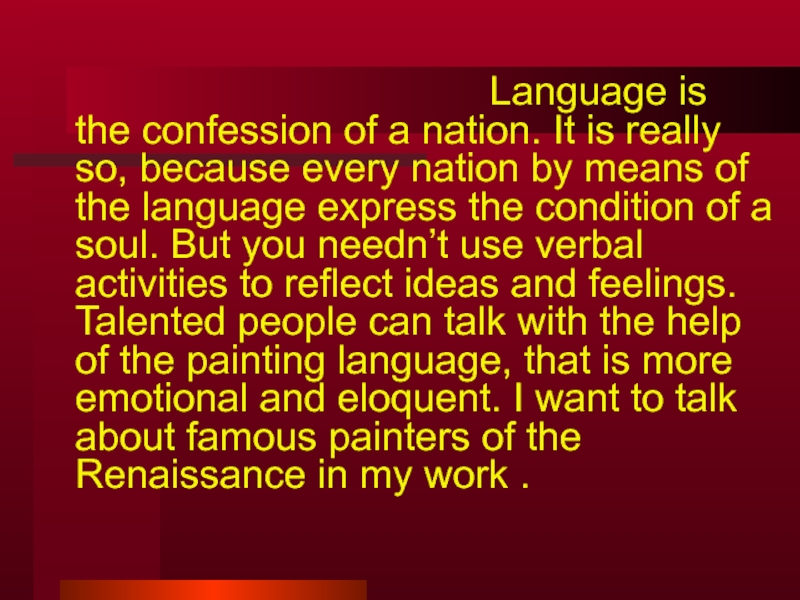
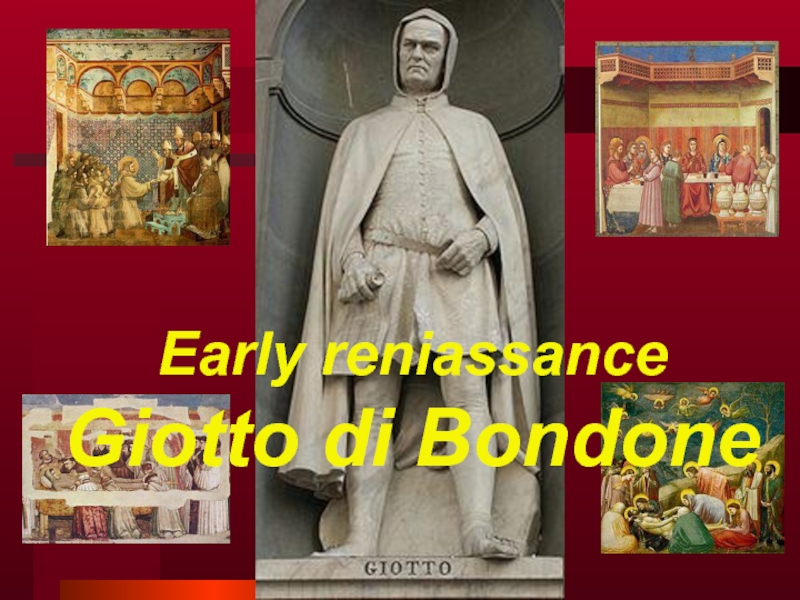
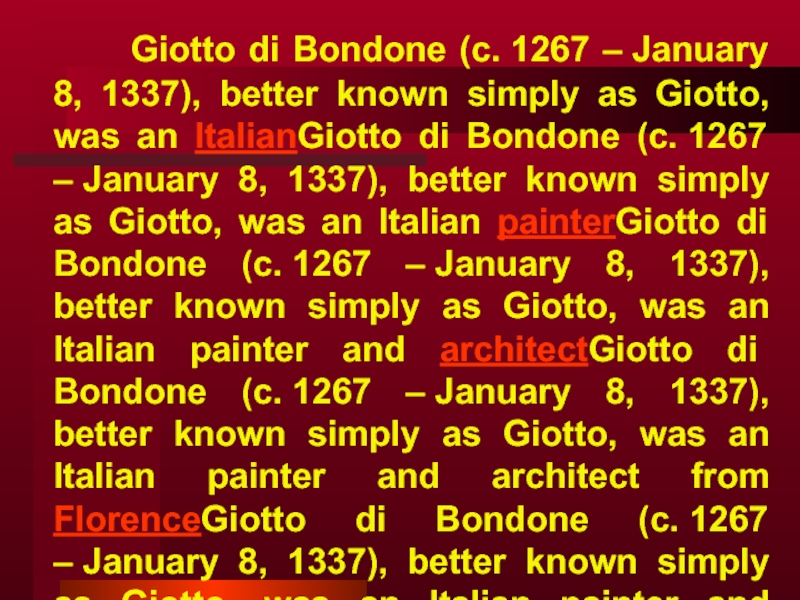
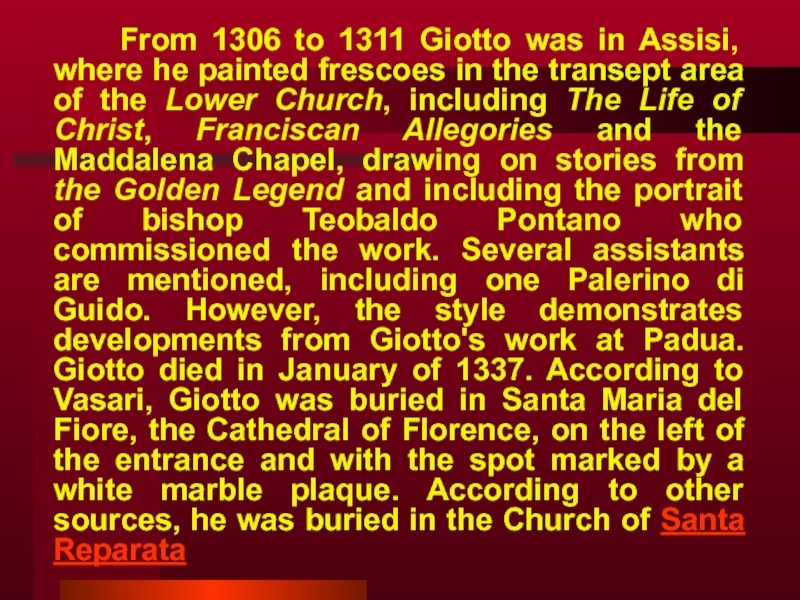
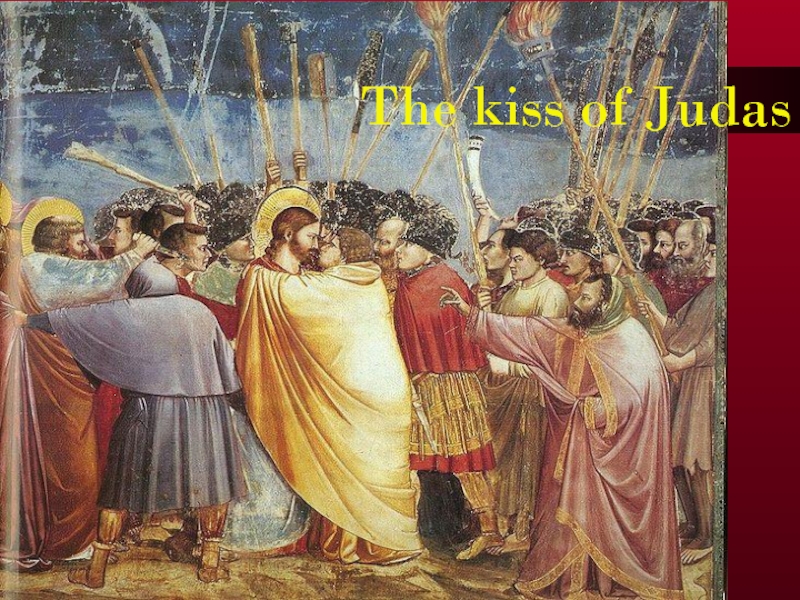

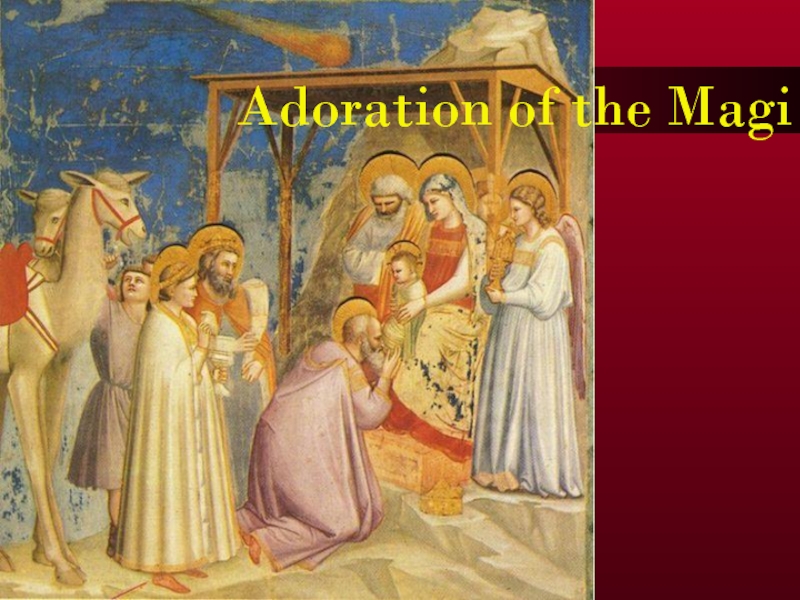
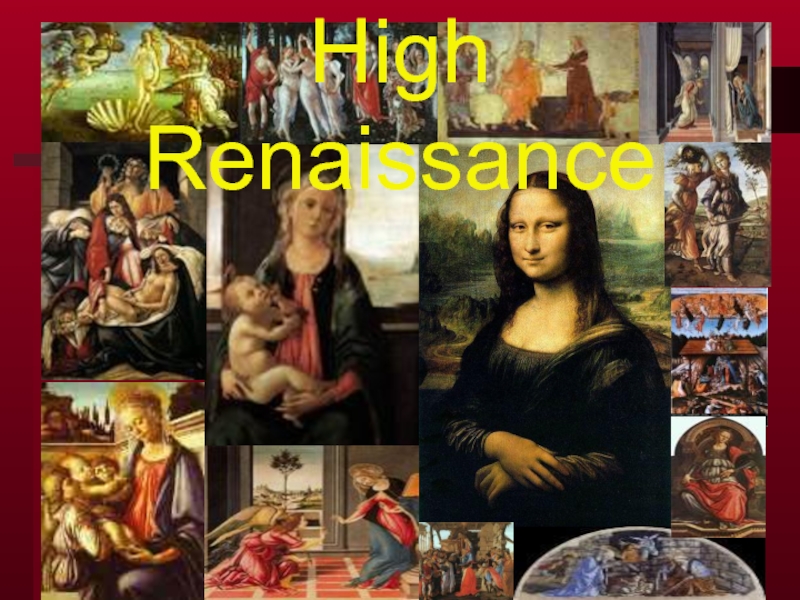
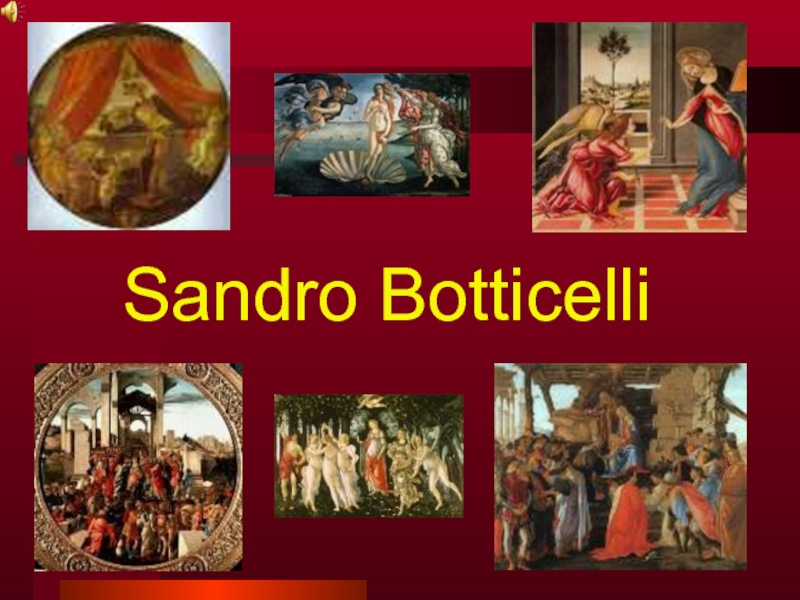
![Презентация по английскому языку История искусства Original name ALESSANDRO DI MARIANO FILIPEPI (b. 1445, Original name ALESSANDRO DI MARIANO FILIPEPI (b. 1445, Florence [Italy]--d. May](/img/thumbs/affaa0e5831900cf8634b1768fd0ef0a-800x.jpg)
